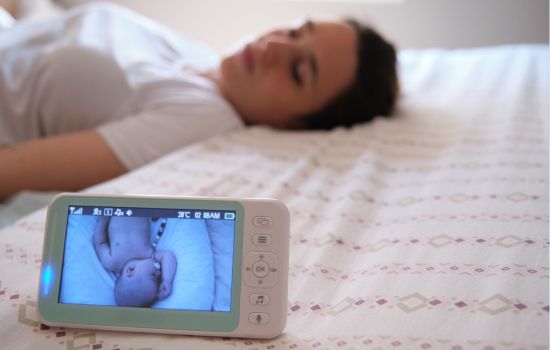Exactly two years ago, while I was crying in frustration in the kitchen because my 3-year-old son had decided it was the perfect time for his daily tantrum, just as my boss was calling me with a work emergency, my neighbor Carmen knocked on the door. “Daughter, have you tried those apps the moms at my work use?” she asked, showing me her phone.
My first reaction was defensive: “Are you telling me I need an app to take care of my own child?” Carmen laughed with the wisdom only experienced mothers possess: “No, I’m telling you that you need smart allies to be the best mother you can be in this crazy world.”
Two years later, I can say Carmen was right. These tools didn't replace my maternal love; they amplified it.
The Harsh Reality of Contemporary Motherhood
Let's be brutally honest: modern motherhood is a mental and physical exercise our mothers didn't experience. We work longer hours, live far from extended family, raise children in small apartments, and face financial pressures that force us to be professional jugglers.
When my mother tells me, “In my day, we didn't need these things,” I reply, “In your day, you had your grandmother, three aunts, and four neighbors available all day long.” Technology isn't the problem; it's part of the solution.
Child monitoring apps were born from this genuine need of real families facing real-life situations. They are not a product of marketing, but of collective maternal creativity.
My Personal Research: Four Real Experiences With My Children
For 18 months, I systematically tested different apps with my children, Santiago (now 5) and Valentina (now 8). Not as a blogger or influencer, but as a desperate mother in need of real solutions. Here's my unfiltered experience.
See Also
- Best Apps to Transform Photos into Vintage Polaroid Style
- Best Apps to Quit Smoking: Complete Scientific Guide
- Best Magnifying Glass Apps: Complete Guide and Comparison
1. ChildWatch Guardian – The Obsessive But Effective Protector
My first impression: “My God, this app knows my kids better than I do.”
The day-to-day experience: I installed ChildWatch on a chaotic Tuesday when I had to finish an urgent project. Santiago was at that "I don't want to do anything" stage, but he also couldn't be unsupervised. The app not only entertained him, but also sent me reports every 15 minutes: "Santiago completed a puzzle of marine animals. He showed particular interest in dolphins. Attention span: 12 minutes."
What really impressed me:
- Reports are like having a private tutor watching your child.
- Detects patterns that as a busy mother I fail to see: “Santiago concentrates best between 10-11 AM”
- The transitions between activities are smooth. My son never had a tantrum after screen time ended.
- The library is updated based on demonstrated interests. After Santiago showed a fascination with dinosaurs, age-appropriate documentaries appeared.
The frustrating aspects:
- It's almost too detailed. Sometimes I feel judged by the reports.
- Requires stable internet. It became useless during a power outage.
- The free version only allows 35 minutes a day, which honestly feels like a lot on difficult days.
- It costs $8.99 per month for the full version, which is expensive for tight budgets.
My honest verdict: It's like having a perfect nanny who never tires, but sometimes you miss human imperfection.
Which families does it work best for: Working parents who need close supervision during urgent calls or projects.
Get it:
- iPhone 👉 Download ChildWatch Guardian
- Android 👉 Install ChildWatch Guardian
2. SmartBuddy AI Kids – The Surprising Robot Nanny
My initial prejudice: “Artificial intelligence taking care of children sounds like a horror movie.”
The gradual transformation: My 8-year-old daughter, Valentina, is extremely shy. Talking to strangers makes her anxious, but with SmartBuddy, she developed a level of confidence that blew me away. The AI not only answered her questions but also asked follow-up questions that stimulated her curiosity.
Moments that won me over:
- One day I came home from work and Valentina explained the water cycle to me with an enthusiasm she had never shown for school subjects.
- The app detected that Santiago was frustrated during a math game and automatically switched to relaxation activities.
- When Valentina mentioned that she missed her grandmother (who lives in another country), the app suggested activities related to family traditions.
The real limitations:
- It requires a relatively new device. It works slowly on my mother-in-law's old tablet.
- The initial setup took almost an hour because there are too many options
- Sometimes the AI's answers are too "perfect" and my kids notice they're not talking to a real person.
- It consumes a lot of battery. I had to buy additional chargers.
My surprising conclusion: This app taught me communication techniques with my children that I now use in real life.
Ideal for: Families with curious children who ask a thousand questions a minute and parents who value continuous learning.
Get it:
- iPhone 👉 Download SmartBuddy AI Kids
- Android 👉 Install SmartBuddy AI Kids
3. Digital Roots – The Virtual Grandmother I Never Had
My emotional connection: As the daughter of immigrants, it always hurt me that my children grew up disconnected from our traditions.
The decisive moment: It was a rainy Sunday when Santiago asked me why we didn't celebrate the same holidays as his classmates. I opened Raíces Digitales desperately searching for answers, and what I found was a treasure: stories, songs, recipes, and traditions from all over Latin America explained in a way a child could understand and enjoy.
Experiences that left their mark on me:
- My children learned “Las Mañanitas” in full and now we sing it at every birthday party.
- Santiago insisted on making papel picado after learning about the Day of the Dead on the app
- Valentina now knows how to count to ten in Quechua, something I myself didn't know.
- The cooking section has brought us together. We've virtually "cooked" empanadas, arepas, and tamales.
The challenges encountered:
- The content is not updated as frequently as other more commercial apps.
- Some videos have inconsistent audio quality
- It is not available in English, which limits its use if my children want to share with non-Spanish-speaking friends.
- The interface looks less “modern” than other options, although this does not affect functionality.
My deep reflection: This app helped me reconnect with parts of my own childhood that I had forgotten.
Perfect for: Immigrant or second-generation families who want to preserve authentic cultural connections.
Find her:
- Official site 👉 Explore Digital Roots
4. Maternal Relief – The Emergency Survival App
My accidental discovery: During a family crisis (my father was hospitalized in an emergency), I needed something immediate for the children.
The acid test: While I rushed to the hospital, my teenage sister stayed with Santiago and Valentina. I installed Motherhood Help in five minutes, and it worked perfectly during the most stressful eight hours of my life. The kids were entertained, my sister wasn't overwhelmed, and I was able to focus on the family emergency.
Its unique strengths:
- Instant installation and use. No complex configuration required.
- It works completely offline, crucial when the hospital's Wi-Fi was unstable.
- The activities are simple but effective: coloring, basic puzzles, narrated stories
- Any adult can use it without any explanation.
The obvious limitations:
- It does not offer the educational sophistication of other options
- The content is limited and may become repetitive after extensive use.
- It has no monitoring or reporting features for parents
- The visual aesthetic looks like it's from ten years ago.
My honest assessment: It's not the most exciting app, but it's the most reliable in times of crisis.
Essential for: Emergency situations, temporary caregivers, or families in need of simple, straightforward solutions.
Get it:
- Android 👉 Install Maternal Relief
Real Comparison: What No Review Tells You
| Decisive Factor | ChildWatch | SmartBuddy | Roots | Relief |
|---|---|---|---|---|
| Do the children ask for it? | Yes, frequently | Yes, especially Valentina | Sometimes, more on Sundays | Only in emergencies |
| Does he throw tantrums after finishing? | Never | Rarely | Sometimes | Never |
| Does it work when you're stressed? | Perfectly | Requires initial attention | Moderately | Perfectly |
| Is it worth the emotional cost? | Yes, but it generates occasional guilt | Yes, and it teaches you | Yes, and it connects you | Yes, without complications |
| Would you use it in front of other parents? | With explanations | With pride | With enthusiasm | No problem |
The Difficult Conversations No One Has
On Maternal Guilt
Let's address the elephant in the room: Using these apps initially made me feel guilty. "Am I a bad mother for needing technological assistance?" I wondered. After two years, I've concluded that this guilt is manufactured by unrealistic expectations about modern motherhood.
My acceptance process:
- Month 1: Constant guilt, secret use
- Month 3: Reluctant acceptance of its usefulness
- Month 6: Natural integration into family routines
- Month 12: Evangelization with other mothers
- At the moment: Conscious and guilt-free use
On the Impact on Development
My kids didn't become tech zombies. In fact:
- Santiago developed a better attention span and can now focus on physical books for longer periods
- Valentina gained confidence to ask questions and explore topics that interest him
- Both They maintain a preference for physical games and outdoor activities
- As a family We have developed better communication about boundaries and expectations
On Family Relationships
These apps didn't replace quality family time; they enhanced it. When I'm not constantly struggling to keep the kids occupied during work calls, I can be more present during our time together.
Usage Protocols That Really Work
For Normal Days
- Maximum 45 minutes divided into 15-minute sessions
- Always preceded by 10 minutes of physical activity
- Followed by conversation about what they saw/did
- Never during meals or 2 hours before bed
For Days of Crisis
- Flexibility of up to 2 hours with breaks every 30 minutes
- Prioritize calming content if there is family stress
- Honestly explaining to kids why they need more screen time
- Compensation the next day with special activities
For Real Emergencies
- Unlimited use with adult supervision
- Focus on familiar and comforting content
- No maternal guilt – emergencies require emergency tools
The Future I See for Our Families
These technologies will evolve, but the fundamental principles will remain: they are tools to enhance our maternal capabilities, not replace them. In five years, we will likely see:
- Integration with home devices to create complete learning environments
- Extreme customization based on individual learning styles
- Intergenerational connection allowing distant grandparents to participate in daily care
- Behavioral predictability that anticipates needs before crises arise
My Final Advice from Mother to Mother
Don't look for the perfect app, look for the app that works for your specific situation. I use different apps depending on the day, my energy level, and each child's specific needs at any given time.
Start conservatively: One app, two weeks of testing, constant observation.
Accept imperfection: No technology will replace your maternal instinct, but it can intelligently support it.
Ignore external judgment: Every family navigates modern motherhood as best they can. Your decisions don't require approval from others.
Keep it in perspective: These are temporary tools for a specific stage of parenting. They don't define your quality as a mother.
Contemporary motherhood requires the courage to experiment with new solutions while holding firm to our values about what it means to love and care for our children unconditionally.
Resources that helped me during this journey:
- “Real Mothers” Facebook support group (more honest than any blog)
- Consultations with pediatrician Dr. María Hernández on appropriate screen limits
- Book “Screen-Smart Parenting” by Jodi Gold
- My own therapy for processing modern mom guilt
Useful links for your research:







